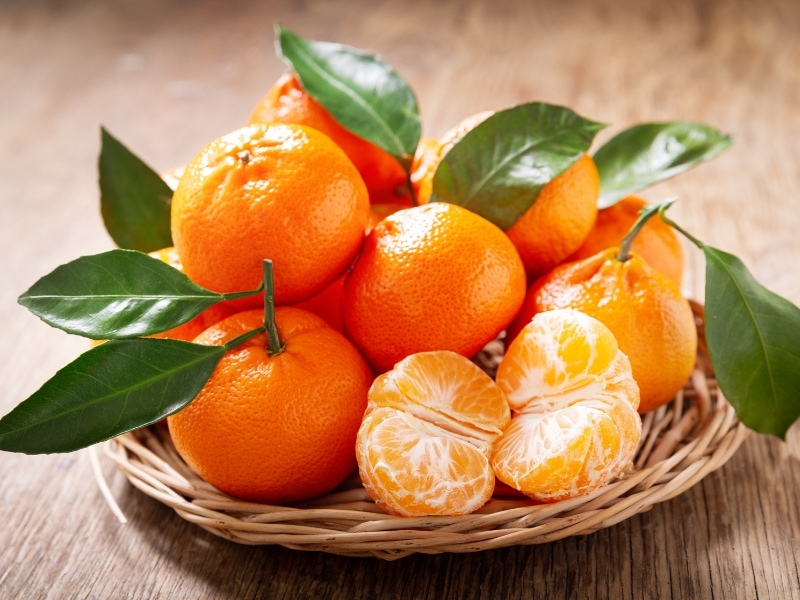Oranges are among the most popular and widely cultivated fruits in the world. Known for their juicy sweetness, refreshing flavor, and high vitamin C content, oranges are enjoyed fresh, as juice, in desserts, and in savory dishes worldwide. Beyond their taste, oranges are a crucial agricultural product, sustaining economies and farmers across the globe.
Every year, millions of tons of oranges are harvested from orchards around the world, but a few countries stand out for their massive production volumes and influence in the global market. In this article, we’ll explore the top 5 orange-producing countries in the world, why they excel, and how their citrus industries shape local and international markets.
1. Brazil — The Global Orange Powerhouse

Annual Production: ~16–17 million metric tons
Key Regions: São Paulo, Minas Gerais, Paraná
Brazil has consistently ranked as the world’s largest producer of oranges, and by a wide margin. The country produces nearly a quarter of the world’s oranges every year. The heart of this production is São Paulo state, where vast citrus groves stretch across the landscape, supported by an ideal climate — warm temperatures, rich soils, and adequate rainfall.
But Brazil isn’t just famous for fresh oranges. What truly distinguishes the country is its dominance in the orange juice market. Approximately 70% of the world’s orange juice comes from Brazil, with most of it exported to North America, Europe, and Asia. Major Brazilian citrus companies like Cutrale, Citrosuco, and Louis Dreyfus handle the majority of these exports.
Challenges:
Despite its dominance, Brazil faces challenges, including the persistent threat of citrus greening disease (HLB), labor issues, and climate-related disruptions such as droughts and heatwaves. These factors have occasionally reduced yields and increased costs.
Fun Fact:
São Paulo’s orange groves are so vast they can be seen from space during harvest season!
2. India — Rising Domestic Demand and Expanding Orchards

Annual Production: ~10.5 million metric tons
Key Regions: Maharashtra, Madhya Pradesh, Punjab, Arunachal Pradesh
India is the second-largest orange producer globally. Although its citrus sector doesn’t receive as much international attention as Brazil’s, it plays a crucial role in feeding the country’s enormous population. Indian oranges are largely consumed fresh, with lesser quantities used for juice, candies, and preserves.
The most famous Indian variety is the Nagpur Orange, grown in Maharashtra. This medium-sized fruit is known for its sweetness, loose skin, and distinctive flavor. Another popular type is the Khasi Mandarin from the northeastern states, which thrives in hilly terrains.
Challenges:
The Indian citrus industry grapples with issues like post-harvest losses, poor cold-chain logistics, and inconsistent yields due to pest infestations and erratic monsoons. However, ongoing government initiatives like the National Horticulture Mission aim to improve storage, transport, and orchard management practices.
Fun Fact:
Nagpur, known as the Orange City of India, celebrates an annual Orange Festival showcasing its world-famous produce.
3. China — Rapid Growth and Huge Domestic Market

Annual Production: ~7.5 million metric tons
Key Regions: Jiangxi, Hunan, Sichuan, Guangxi
China has witnessed a remarkable rise in orange production over the past two decades. With growing middle-class demand for fresh fruits and natural juices, the country has heavily invested in expanding its citrus orchards, modernizing farming techniques, and improving distribution networks.
Oranges in China are primarily consumed fresh, with a significant increase in the demand for juice and citrus-based products during festivals and holidays. Unlike Brazil, China produces mainly for its domestic market, as its per capita fruit consumption continues to soar.
Challenges:
Despite impressive production figures, China faces challenges with climate variability, outbreaks of citrus diseases, and maintaining fruit quality over long transport distances within its vast territory.
Fun Fact:
Oranges hold cultural significance in China, symbolizing wealth and good fortune, especially during Chinese New Year celebrations.
4. Mexico — A Major Player in North America

Annual Production: ~4.6 million metric tons
Key Regions: Veracruz, Tamaulipas, San Luis Potosí
Mexico ranks as the fourth-largest orange producer in the world. Its citrus industry is centered in the Gulf state of Veracruz, where the tropical climate and fertile soils are perfect for cultivating sweet, juicy oranges.
Mexican oranges are used both for fresh consumption and juice production, though the country focuses more on fresh-market sales. Within North America, Mexico is a major supplier of oranges and orange juice, particularly to the United States.
Challenges:
Mexico’s citrus sector has faced issues with greening disease (HLB), water scarcity, and trade restrictions. The government and growers have implemented pest control and orchard management programs to maintain production levels and fruit quality.
Fun Fact:
Veracruz accounts for over 50% of Mexico’s orange production, making it the undisputed citrus capital of the country.
5. United States — Tradition Meets Innovation

Annual Production: ~4–4.5 million metric tons
Key Regions: Florida, California, Texas
The United States, particularly Florida and California, has a long history of orange cultivation. Florida, with its humid subtropical climate, specializes in juice oranges, particularly the Valencia and Hamlin varieties. California, with its Mediterranean climate, produces navel oranges, prized for their rich flavor and seedless nature.
Although the U.S. was once a dominant force in orange production, it has slipped in the global rankings due to citrus greening disease, hurricanes, droughts, and labor shortages. Florida’s orange output has fallen dramatically in recent years, with citrus greening alone responsible for a 90% decline in production since 2005.
Challenges:
Besides environmental threats, the U.S. citrus industry faces increased competition from imported oranges and changing consumer preferences for other beverages.
Fun Fact:
The U.S. celebrates National Orange Juice Day on May 4th every year to honor its love for the refreshing drink.
Global Orange Production at a Glance
| Rank | Country | Annual Production (Million Tons) | Key Uses |
|---|---|---|---|
| 1 | Brazil | 16–17 | Primarily juice, exports |
| 2 | India | ~10.5 | Fresh consumption, local juice |
| 3 | China | ~7.5 | Domestic fresh, traditional use |
| 4 | Mexico | ~4.6 | Fresh consumption, North American exports |
| 5 | United States | 4–4.5 | Juice (Florida), fresh (California) |
Trends Shaping the Global Orange Industry
The global orange industry is currently navigating several significant trends:
- Climate Change: Increasing temperatures, droughts, and extreme weather events are affecting crop yields, especially in Brazil, the U.S., and Mexico.
- Citrus Greening Disease: This incurable bacterial disease, spread by the Asian citrus psyllid, has devastated orchards in Florida and Brazil, forcing growers to adopt resistant varieties and advanced pest control.
- Rising Demand for Fresh & Natural Juices: As health consciousness rises, consumers are opting for 100% natural juices and organic oranges, fueling growth in the premium produce segment.
- Technological Advancements: Use of precision agriculture, drip irrigation, and drone monitoring is transforming citrus farming, helping improve yields and reduce waste.
Conclusion
Oranges continue to be a staple fruit enjoyed by millions around the globe. While Brazil remains the undisputed leader, countries like India and China are making substantial strides in meeting the soaring domestic demand for fresh citrus. Mexico and the United States play vital roles within the Americas, despite grappling with environmental challenges.
As climate concerns and disease outbreaks reshape the landscape, innovation, sustainable practices, and international collaboration will be key to ensuring a bright, citrus-scented future for orange lovers everywhere.





